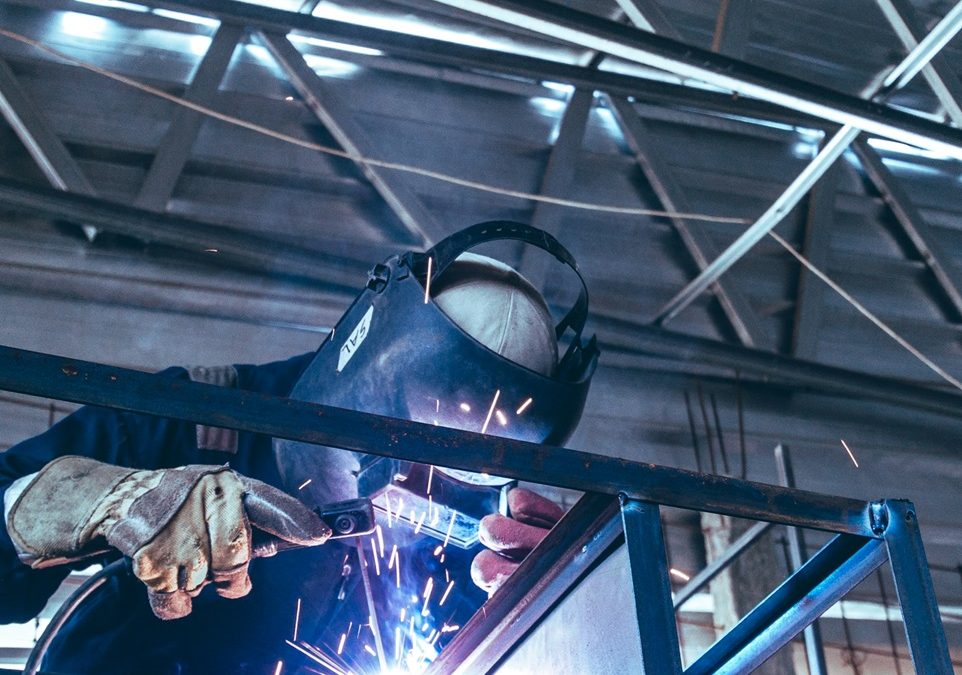Metalwork has been an integral part of human history, evolving from rudimentary techniques to highly sophisticated methods. Throughout the ages, advancements in technology and the development of precision tools have revolutionized the field of metal fabrication. From ancient blacksmithing to modern welding, each era has contributed to the mastery of metalwork, shaping civilizations and industries alike.
In recent times, tools like the Miller Multimatic 220 AC/DC multiprocess welder have played a significant role in advancing metal fabrication techniques. They offer versatility and precision when joining various metals.
Ancient Techniques and the Birth of Blacksmithing
In ancient civilizations like Mesopotamia and Egypt, blacksmithing emerged as a crucial craft. Artisans shaped bronze and iron into tools, weapons, and ornaments.
The earliest blacksmiths worked with simple tools like hammers and anvils, heating metal in primitive forges fueled by charcoal or wood. Facts.net notes that contrary to common misconception, the term “blacksmith” does not relate to the color of the smith’s skin or attire.
Instead, it originates from the black oxide coating that develops on the metal as a result of the forging process. This historical etymology sheds light on the true origins of the term and its connection to the craft of metalworking.
Over time, blacksmithing techniques spread across continents, evolving with cultural influences and technological innovations. The craftsmanship of ancient blacksmiths laid the groundwork for the Industrial Revolution centuries later, shaping the course of human history.
Industrial Revolution and the Age of Machinery
The Industrial Revolution, sparked by innovations in metallurgy and machinery, transformed metalwork from a manual craft to a mechanized industry. Steam engines powered factories, driving the mass production of metal goods and machinery on an unprecedented scale.
With the advent of assembly lines and interchangeable parts, manufacturers achieved new levels of efficiency and productivity. The industrial age ushered in an era of urbanization and infrastructure development fueled by the mass production of steel and other metals.
World Wars and Technological Advancements
The world wars spurred technological advancements in metalwork to meet the demands of military conflict. Welding techniques like arc welding and gas welding became vital for manufacturing military equipment, ships, and aircraft.
Innovations such as oxyfuel cutting and resistance welding emerged during this period, further enhancing the capabilities of metal fabrication. The wartime efforts accelerated the development of welding technologies, paving the way for post-war industrial growth and innovation.
The Engineer notes that before the advent of arc welding in the early 20th century, oxy-acetylene was renowned for its welding and cutting prowess. However, in recent years, oxyfuel cutting has gained widespread acceptance as an industrial cutting method due to its efficiency and effectiveness.
Capable of cutting materials up to 250mm thick, oxyfuel cutting offers relatively affordable equipment and can be automated for large-scale material-cutting operations.
Modern Innovations and Digital Precision
In the modern era, digital technologies have revolutionized metal fabrication, enabling unprecedented levels of precision and customization. Computer numerical control (CNC) machining has streamlined manufacturing processes, allowing for intricate designs and tight tolerances.
TechTarget notes that in CNC machining, every item slated for production requires a unique computer program typically crafted in G-code. This program is then stored in and carried out by the machine control unit (MCU), a microcomputer linked to the machinery. Additionally, CNC operations often integrate the use of M-code language alongside G-code for enhanced precision and functionality.
Innovations like laser cutting and 3D printing technologies have expanded the possibilities of metalwork, offering efficient prototyping and production of complex components. These innovations have transformed industries ranging from aerospace and automotive to healthcare and consumer electronics, driving innovation and economic growth.
The AC/DC Multiprocess Welder
The invention of the AC/DC multiprocess welder revolutionized the welding industry, offering versatility and efficiency in metal fabrication. According to the Indiana Oxygen Company, one widely recognized model in this category is the Miller Multimatic 220 AC/DC Multiprocess Welder. Machines like these are known for their adaptability across various welding processes like MIG, TIG, and stick welding.
These machines provide users with advanced features and a user-friendly interface. This makes it a common choice in workshops and construction sites globally. The versatility and precision of AC/DC multiprocess welders have transformed the way metal structures are fabricated, ensuring strength and durability in various applications.
FAQs
Which metal is used for metalwork?
Metalwork can involve various metals, including steel, iron, aluminum, copper, and alloys like bronze and brass. This is dependent upon the project’s requirements and the particular application.
What is the main idea of the Industrial Revolution?
The main idea of the Industrial Revolution is the widespread transition from agrarian and handicraft-based economies to industrialized societies. This is characterized by mechanized production, technological advancements, and urbanization.
What is the process of oxyfuel welding and cutting?
Oxyfuel welding and cutting involve the use of a mixture of oxygen and a fuel gas, such as acetylene, to create a high-temperature flame. The heat generated by the flame melts the metal, allowing for fusion or severance depending on the application.
In conclusion, the evolution of metalwork stands as a testament to human ingenuity and adaptability. From ancient blacksmithing techniques to modern precision fabrication methods, each era has contributed unique advancements that have shaped civilizations and industries worldwide.
The development of metalworking, from basic forges to advanced CNC machining and multiprocess welding, highlights humanity’s pursuit of efficiency and precision. Adopting digital technologies and advanced materials ensures ongoing innovation in metal fabrication, shaping future industries with strength, durability, and intricate craftsmanship. Tomorrow’s landscapes will be defined by the continued progress in metalwork, driven by a dedication to enhancing efficiency, precision, and versatility.

Recent Comments